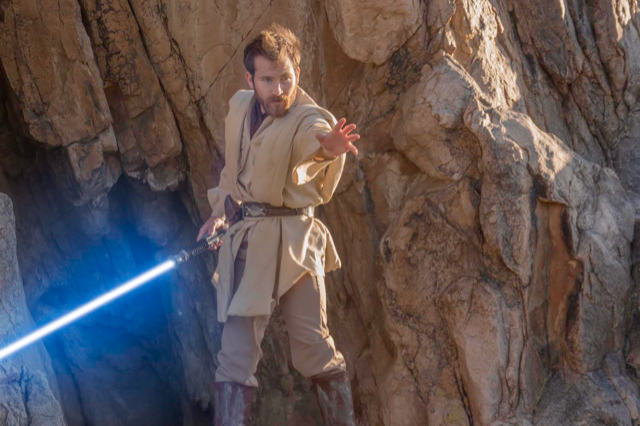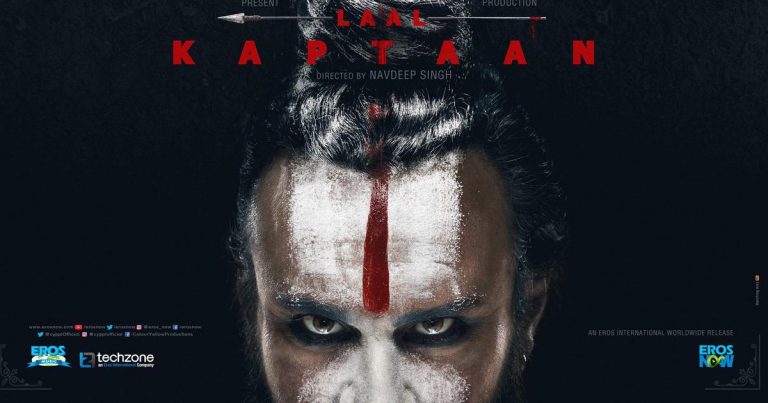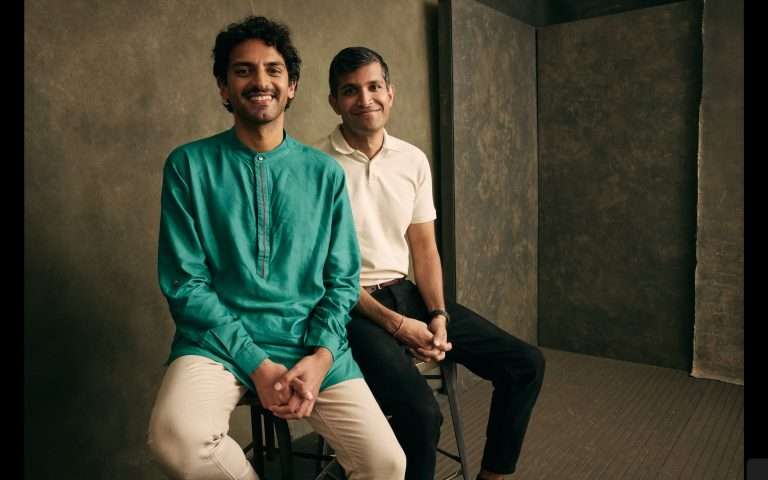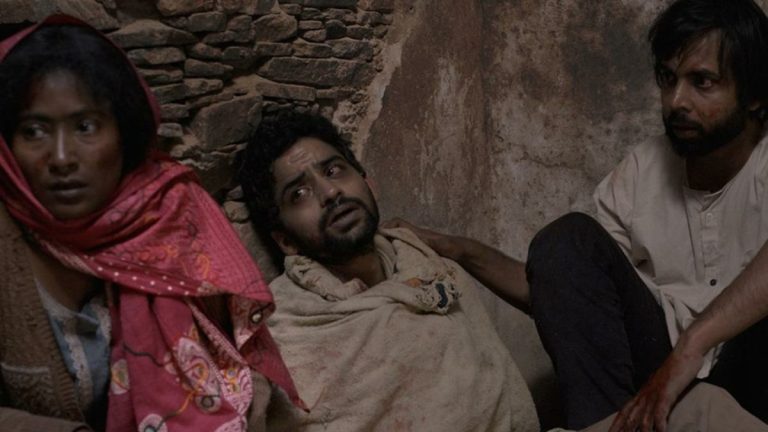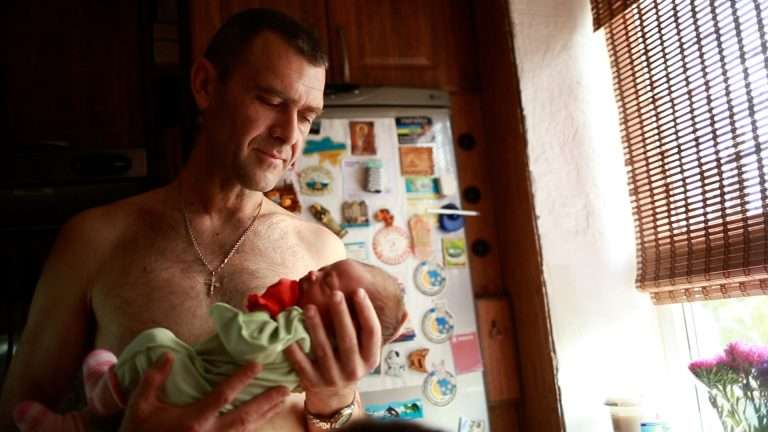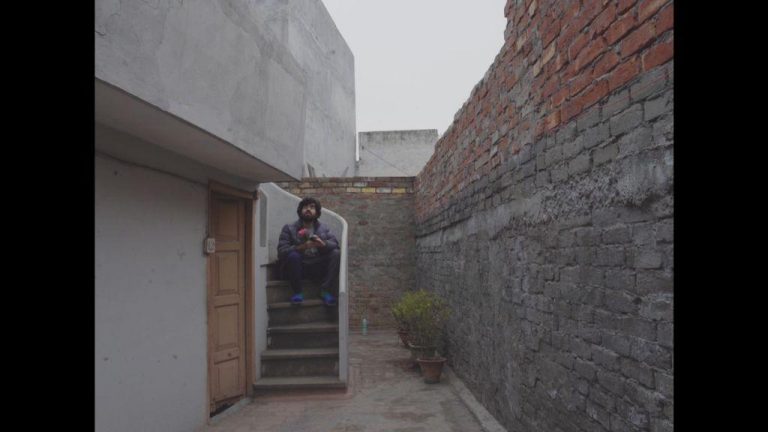In her article Playing Cricket in Eidgah: Affective Labour in Kashmiri Childhood(s), Sarbani Sharma postulates “the figure of the Kashmiri child oscillates between twin narratives: the innocent child killed in armed conflict whose future needs to be secured through good governance and talent appreciation; and the unruly and criminalized Kashmiri child who needs to be constantly disciplined.” Amidst such decided binaries, Faraz Ali’s “Obur” (2024), the Kashmiri short film made as part of MAMI’s Filmed on iPhone program, foregrounds an imagination of Kashmir and Kashmiri childhood that is acutely quotidian, with only surfaces and hints of subcutaneous conflicts. “Obur” presents us with a reality that is so normal that it makes us wonder if it is twice-removed from its established narrative.
Obur” recently got awarded at the CCA 2025 India, sweeping almost all major awards. It is also a film that I have recently developed an obsession with, particularly for its foregrounding of its genius metaphysical conceit. So we sat down with the writer and director of the film to understand what went into the cauldron that brewed the magic.
“Obur” is shot by Anand Bansal. It is available to watch on YouTube.
Damayanti Ghosh: I feel “Obur” has an inherent intellect because of how you establish its conceit by yoking together two concepts so far removed from each other. When I watched Obur, it instantly reminded me of John Donne’s poem ‘A Valediction Forbidding Mourning.’ Literary critic Helen Gardner demystifies the workings of a conceit by saying that “a comparison becomes a conceit when we are made to concede likeness while being strongly conscious of the unlikeness.”
In Donne’s poem, a parallel is drawn between human souls and the hands of a draftsman’s compass. The conceit in “Obur” is equally evocative, where you draw a thread between the cyberspace (cloud storage) and the natural, meteorological phenomenon of clouds. I want you to reflect a bit on that and talk about how you chanced upon that conceit.
Faraz Ali: Thank you so much for the observation and for drawing a parallel with a beautiful poem such as this. I am very drawn in life to the existence of irony in society in many ways, especially when it is very metaphorical and metaphysical. When I was analyzing the concept of cloud, I thought that it might be very elusive to analyze cloud in a remote village of Kashmir, where it also has a metaphysical meaning.
A cloud could be a cloud, which is a digital storage medium, but it also reminds me of a cloudburst. The avalanche and the physical nature of the cloud really helped me bring the metaphor of how fragile the space for data storage could be in the times that we live in. I really thought that it was going to be interesting to bring this irony. It was also not about the rural setup versus the advanced technology of cloud storage.
I see “Obur” as a dark comedy. That was my intent when I was jumping into making it, as there was so much already being said in the milieu of Kashmir, and a lot of that is morose and melancholic in nature. So, I thought that while I retain the truest self in terms of analysing Kashmir, how can I just say it with a bit of humour? That led me to thematically tie everything under the similitude of dark comedy. What happens in these tragicomedies is the fact that tragedy and comedy both run parallel. I
also feel that when we try to construct realism in cinema, reality is so tragic and so comical. I often see it around me in my everyday life, and I feel that if I get to document or journal on that, it would be so funny. The oldest jokes and comedy are built around tragedy, and hence they become comical. As they say, man slipping over the banana peel is the oldest joke, but it really works because it is so tragic.
As you keep on raising the stakes and eventually replace the man with the queen, the joke keeps getting better. That is where I thought, in the backdrop of a small village of Doodhpathri in Kashmir, the concept of cloud becomes so ironic. Then there is also the theme where death and the desire to procreate through the medium of horses run so parallel. I am, in general, very curious and drawn towards exploring anything that is very ironic. I feel that gives way to a very strong conflict, and hence the motivation to tell the story.
Damayanti Ghosh: What is that one thing about the film that you are relieved that you hoped would land well, and it really did land well?
Faraz Ali: It was not just the critics, but a lot of people confused me for being Kashmiri. They feel that I am very well aware of the language. So, I remember as soon as the film was out, I got a call from a Kashmiri filmmaker. He said, “Why don’t you come visit me?” and I went to his house. He spoke for about a good thirty minutes in Kashmiri, and then I told him that I was not a Kashmiri and I did not know the language. I feel that the authenticity of the language and the dialect worked for most Kashmiris, and that mattered the most. I was also pushing the envelope, and I was incorporating a lot of Hindi as well.
In Kashmir, the language is not only Koshur but also Gujri, a mix of Kashmiri and Punjabi. In that landscape alone, there are different forms of Kashmiri that are spoken. While I was there in Kashmir for about a month, we did a good amount of research on how it is spoken. When we come to the main city (towards Srinagar), you will often notice that a lot of people speak Hindi and that Hindi is also of a certain dialect. This is due to the fact that a lot of people migrated to the place for tourism and in pursuit of making money.
When the people find the language of the film to be authentic, the naturalism of the film really resonates with the natives. I feel that is very rewarding. I am usually conscious of and exploring the kind of stories I want to tell. The more I make, the more I come to know about myself. While I made the second film, I realised that I am very sensitive towards telling stories about cities and places, and the latter has a very strong character.
In “Shoebox,” it was fairly easy because it was largely about Allahabad– the city where I grew up and spent twenty years of my life. However, Kashmir is more recent and different, as I have only been there twice or thrice. To make such a strong political commentary or develop your own political bone about the city and then get accepted for the naturalism of it all, I felt it to be extremely rewarding when it came from the people of Kashmir.
Damayanti Ghosh: It is also fascinating how Obur becomes a gestural archive of teenagehood in Kashmir. Here is a place that is heavily militarized. The children/the youth are heavily militarized. The children/the youth are relentlessly framed as criminals by the media hegemony.
Conversely, the alternative media houses take out heartrending images of children navigating life amidst unimaginable conflict and violence and becoming victims in turn. Obur is markedly different from both. There is no military in sight. We see a boy being a boy, traversing through the snow-laden landscape, playing water squeeze games, and riding horses. What do you have to say about that?
Faraz Ali: I wanted to focus more on the innocence of the kid. I believe it very strongly that kids mature very early on in their lives, as we assume them to be. It is not so binary in nature– their childhood and their innocence. At one point, we see him playing with his water bubble game, but at the same time, he is involved with the business of the family. He is also very aspirational because he wants to multiply and invest in horse mating. He wants to make money as he is so aware of the entire mating process of the horse. I feel that it is not just innocence that is so binary in nature. I feel that there is more to kids beyond innocence; there is a lot more to them, and there is more to this coming-of-age story.
When you observe the life of Suppu, and through that you meet Suppu’s friends, and you navigate into knowing the youth and the culture of Kashmir, you will realise that people largely want dignity right now. And good business to do there. This is despite the fact of it being a heavily militarized zone, with its pathos of the past and partition. That is what the youths want too– they want to live like the youth of Maharashtra. They like to go to college, they want to dress up, and they listen to a lot of Western music.
Despite all these influences, the portrayal of the Kashmiri youth has largely been very stereotypical. The images are such that they are dressed in a certain way, and you will hear Rubab playing in the background. This is again very binary in nature. I wanted to explore beyond the obvious binaries. If there is a kid who is in his early teens, is it only going to be about the innocence of him enjoying his games and exploring around in the snow-clad mountains? No. It is going to be a lot more– he might be involved more in the business and be transactional by nature. My intent was to bring out a slice of life from Kashmir, the kind we often miss. The film ends with a crisis that is very ongoing to the milieu of Kashmir, like a power outage.
Damayanti Ghosh: When you presented your truth, devoid of any binaries, did you practice any form of self-censorship?
Faraz Ali: It happens all the time. As much as I deny it, I have my bias. The self-censorship that plays in my mind… I cannot deny it, I cannot get over it, I cannot fight it, it is part of my life, and I have accepted that it is going to be there in all my stories. It is almost like the Theory of Ecstatic Truth by Herzog; there are facts that exist as journalistic facts, but it is up to the filmmaker to reconfigure them according to their perception. I will bring the art of staging, and I will bring the art of designing. I will choose the colours in a certain way to convey the story. The course and the process of doing all of this add up to the subconscious censorship that you go through.
You become a very strong part of a bias that you develop. I feel that it is in no way realistic to show Kashmir without the military. Right from the time you land at the airport, till wherever you go, be it Srinagar or beyond that, it (the military) is unmissable. It was my strong bias that I did not want to see it. I thought that we should just capture Kashmir without it. I decided to completely erase it. It is my bias. At the same time, there was a lot of self-censorship that I was bringing because I am aware of my faith. I am telling the tale of a state that is predominantly under dispute, had a past, and now Muslims are living there predominantly.
So, a lot went into it in terms of sound design: what to use and what not to use, what would culturally be interpreted differently. Like in Obur, you do not hear Azaan at all, and Suppu is not a Kashmiri Muslim but a Kashmiri Pandit. If you go to the valley, you will find Hindus, but they are so beautifully camouflaged that you cannot tell them apart.
I did not want to force it, but when you see the interiors of Suppu’s house, you will still see pictures of idols. When I went to these villages, I kept asking the villagers if there were still Hindu families living around, especially the ones who are in the business of tourism and horses around. There are indeed a lot of Hindu families, but the population might be about 10-15 persons. That time, I was very sensitive towards how I portrayed them. I did not want to add even 1% of that design from my end. It is not so much a tradition amongst the Muslim families to require a picture of the deceased as a part of the funeral, as it is a tradition of the Hindus. There is a thirteen or fourteen-day period leading up to the ceremony. That needed to be an integral part of the plot.
Damayanti Ghosh: Taking a break from Obur, I have seen some of your works with Netflix. Can you give us a glimpse of what lies ahead for you?
Faraz Ali: I have realised one thing: when you are a filmmaker, you cannot be so binary in your identity. You are an Indian filmmaker. You are an Indian filmmaker who is living in a certain economy. My stories are going to be very different from some of the artists who lived in the early 60s and 50s and made their films. It was a different era, a different economy. They were able to do a lot of things, and they equally decided not to do a lot of things.
Damayanti Ghosh: When you say artists of the 50s and 60s, do you have names in your minds as a reference?
Faraz Ali: A lot of filmmakers… let’s, for example, take Ray. He is a man who comes from advertising– he left advertising and started filmmaking. I am a person who is still in the thick of advertising. I am not able to leave advertising because I feel that the economics is quite different. The circumstances are very different for me. That’s why I feel that my identity as a filmmaker is a filmmaker from India, living in Bombay, paying a certain rent, and affording a certain life. To do that, I wanted to pick my adventure and wanted to fuel my adventure.
With the purity with which I want to construct films, and I want to retain them as long as I can, I want to have a rule in my life where there is one for the soul and one for the kitchen. You need to run it in parallel, and you need to do it really well. There is so much fun and adventure when you design a promo for Netflix, as, perhaps, I will never make a film like this. It gives me a glimpse, I camouflage and live it for a moment, I get to design it, and redesign it, and tell stories and excite people. Not just Netflix, the other work that I do in advertising allows me to retain my voice, and it retains what I do for my soul, but also runs the kitchen really very well. I really love doing it, to be honest.
Damayanti Ghosh: How would you distinguish between what you do for your soul and what you do for the kitchen, in terms of the work that goes into it?
Faraz Ali: When I do for myself, I am painting the wall for myself. I choose my colours, I choose my palette, I choose my wall as well! I choose my working hours as well. I choose as many times as I want to make mistakes and how many times I want to paint the wall.
But when I work for others, I am on a job. I am working according to a certain clock, by a certain budget and design which is dictated by the owners of the wall. I have started to believe that I really enjoy that process as well when I design it for others. There is a fair amount of debate that happens in the room– why your colour is better than mine. But, it is something that you have to strike a balance between very, very intelligently.
I really want to make the films, and have the choice of making the films in terms of the process and themes that resonate with me. To be able to do that, if I am getting to paint the walls for others, and I do it with a lot of fun and grace, there is nothing wrong with it. In fact, I really, really enjoy it, but the process is very different.
Damayanti Ghosh: I bring my conversation to a close with a final question. This is a question of recommendations: as this is High on Films, and as the name would give away, can you name 5 moments of cinematic high for you?
Faraz Ali: Watch Metropolis (1927). When I watched Metropolis at the theatre, it was a screening by NFAI, and it changed my life. I often revisit the film. In fact, the way it ends has had a very strong impact on my life. The card in the end says, “The bridge to the head and hands must be the heart!”– which is empathy. Essentially, the film is about class divide, but it ends on a very peaceful note. The takeaway, as it is a silent era film, is put in the text– it is that the true way to do everything is through empathy.
Be it any decision in your life, be it a decision taken for your soul or your kitchen, be it commerce or be it the arts, I think that everything goes through the route of empathy and the heart. I felt that was a moment that changed everything for me. I watched it during my college, some time back in 2003 or 2004. I was freshly out of Allahabad, and I had grown up watching a certain kind of film. At that age, when you watch something like Metropolis, that changes everything. You become in denial that these are the films made in the 1920s, for the visual spectacle that the film offers, complete with the set design and the visual effects. That was a high point of what the film offered.
The other films that I am going to mention are films that I might not particularly admire, but they have a pretty strong reason why I make films. They did something to my heart and senses that really changed me. Perhaps some of them I may not watch as much now, and some of them I may revisit. I feel that it has to do with the time you watch the film. I was fortunate enough to catch “Metropolis” on the big screen, and it was an absolutely out-of-the-body experience to have witnessed that.
I feel that a lot of people around me went off to sleep as well. Because it was an afternoon in Pune, I was also dozing off and then coming back. I watched it a couple of more times after that. The takeaway from the film that still stands true and has an impact on everything I make and perceive is the card in the end that underlines the importance of empathy. I strongly feel that is how we see the society in India ideally as we go forward, between the haves and the have-nots.
The second is not a film but an experience. I went for a fellowship program and got to work with Werner Herzog in Munich. I journaled some of my thoughts in my diary. I still have that diary and often go back to the diary. It has markings like Day 1, Day 2, Day 3, and so on. Before my fellowship started, Herzog gave us a list of films to watch and books to read. I remember watching Fitzcarraldo (1982) around the same time, along with Aguirre, the Wrath of God (1972). I watched a lot of films around that time that I had not watched before. When I met him, I was able to have these discussions every day for about 10 minutes to 15 minutes.
My takeaway from the film is that he always made it feel so doable. He never made it a great thing about the extraordinary experience of how he made Fitzcarraldo. In fact, he narrated the events with so much humour in retrospect that it really inspired me. There are documentaries on his films that show how difficult it is to put together his films, which are absolutely ambitious. I mean, here is a filmmaker who is so humble, but there was not even an ounce of romanticizing; rather, it was as compelling as his films. I think that was a learning experience.
I feel that every filmmaker goes through a lot of heartache while making his or her film. A lot of pathos is there during the process. Patronizing or romanticizing it often depresses me. Everyone has a tale to tell in the town. We all go through a lot of trouble, and sometimes it sort of undermines the other person. In relativity, it stands no benchmark in comparison. Who had the most trouble: you lost a life, I lost a limb?
You can never talk like this while making a film. It became very intriguing for me when I was speaking to Herzog. He recollected his experience of working with [Klaus] Kinski and the kind of audience that was there. It was always in the pursuit of motivating us to make our films and motivating us to go rogue while making our films, to read and explore more, and to have faith in the tales that we want to tell. Astonishingly, he did these rather than discouraging us by saying that these are the burden of dreams. It was far beyond that.
I feel that films are what they do to you, and filmmaking is what you go through while you are creating that piece of memory that stands for millions and millions of years. My life changed during my course of interaction with Herzog. He was also doing the background score for Lo and Behold… (2016), and I could see that process very, very closely. I felt that it is one thing to make great art, but at the same time, it is completely another thing and a great thing when you get to meet an artist who touches your life. This happens not just with the art but with the words of how they put together that art.
In fact, he recommended a lot of Kiarostami films to watch. I got to watch the Koker trilogy once again, and he discussed Close Up for one entire day. Imagine what it must be like to have an afternoon discussing Close Up with Herzog. It is different. I think, around that time, Abbas Kiarostami was also alive. He, too, would have very similar fellowship programs where he would spend a week with filmmakers. One of our batchmates went for his fellowship program and would share his experiences. That one month hanging around such lovely filmmakers and spending time with Herzog was a dream come true.
Another event that really had an impact on my life was when my father took me to watch Tezaab (1988). That was my first ever time watching a film on a big screen. That was a huge screen, I assume it was a 70mm screen at the Chandralok Cinema in Allahabad. There is a scene in Tezaab when Anil Kapoor lights himself on fire and jumps off as part of a stunt. I can’t tell you, but I had nightmares!
We got the tickets for the stalls and were seated at the front. From there, watching up with his screen position further elevated– I had never seen something like that. Going to the cinema for the first time and watching a quintessential Bollywood film was so, so, so much fun. Then there was no looking back. The next week, I was there watching Jurassic Park! Watching Tezaab was also like a high point.
I remember watching </span>Meghe Dhaka Tara (1960) at the Archive again. As a child, I would push my dad to get me to the afternoon shows on a weekend because it would be so amusing that we would sit on a bike and get to the theatre in the afternoon hours. We will watch a film, and as we come out, it will be like post-sunset. This whole big phenomenon would happen while we are watching somebody’s life for those two and a half hours. That would be so amusing.
As a kid, you will never catch it. I still really enjoy that phenomenon that “Oh, it’s been such a passage of time that has just passed by.” When I would go with my dad to watch films in the afternoon and would be parked out at the parking lot, that is when I would have a small grin that the sunset had already happened. When I watched Meghe Dhaka Tara, it was in the afternoon, and it was raining. The show got over, and it was still raining. You cannot wear your slippers inside the Archive. I wore my slippers, and when I walked out, I kept weeping. This is especially for the last scene when the brother turns back and looks at a stranger whose footwear is broken.
That becomes a reminder of not just one thing to me, but the entire nutshell of the film in the footwear breaking. It really broke me down. From there, I got the idea that I want to tell my stories, but I want to economize my words. I want to economize my moments. What if there is a way to have things tell stories? I found a lot of that in the New Wave Renaissance cinema, where normal everyday things tell you so much more about human life. This is something I try to achieve in Shoebox, as the title gives away, it is about a Shoebox, but it tells so much more about the town and the people. Obur is about the cloud, and the cloud becomes so symbolic of the technology and the phenomenon.
I watched a film called Nasir (2020) by Arun Karthick during MAMI. It is shot by Saumyananda Sahi. It is an incredible film. I am still in awe of the language of the film– how each shot has been conceived and designed. It looks like the way it has been shot is that it is a piece of archival footage or something with that kind of frame ratio, the colours which have been conceived.
It is such a simple and heartbreaking story. I watched it during the pandemic alongside Eeb Allay Ooo!— both on the same day. I was so moved, I was so shocked by the thematic choices, about everything that went into making the film. I also feel that some of the contemporary films which are being made, like Court, Thithi, Ghore Ko Jalebi Khilane Le Ja Riya Hoon, Gamak Ghar, All that Breathes, Ek Tha Gaon, are such lovely films. So it is not just the works of auteurs but also the work that happens now in contemporary times that really inspires me.



